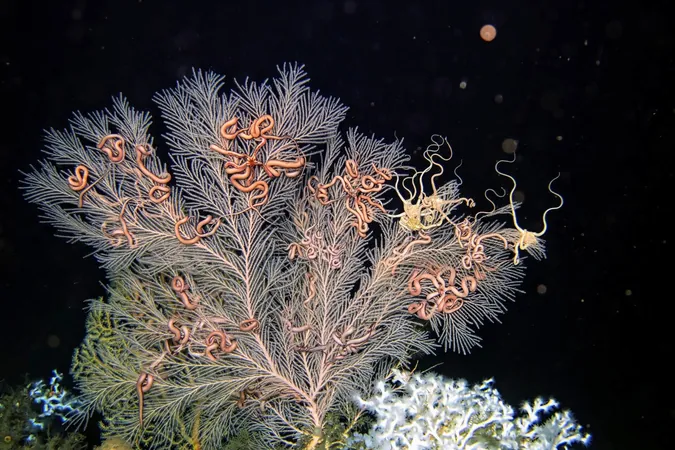
Mysterious Deep-Sea Bacteria Discovered in Coral Reefs: A Groundbreaking Find!
2024-11-06
Author: Daniel
Introduction
In the shadowy depths of the Gulf of Mexico lies a hidden world, teeming with life that thrives in conditions harsh and devoid of sunlight. Here, at depths ranging from 300 to 900 meters, scientists have made a shocking discovery: two unknown species of bacteria residing within the tissues of deep-sea coral species, Callogorgia delta and Callogorgia americana.
The Research Team
Led by Professor Iliana Baums from the Helmholtz Institute for Functional Marine Biodiversity at the University of Oldenburg, a team of researchers from around the globe embarked on a journey to uncover the secrets of these enigmatic organisms. Their astonishing findings were published in the prestigious journal *Nature Communications*, opening a new chapter in marine biodiversity studies.
The Bacterial Strains
The spotlight is now on two unique bacterial strains that belong to a class known as mollicutes. This class of bacteria is notorious for living as parasites on various hosts, including plants and animals, yet these newly found species raise more questions than answers about their role within the coral’s ecosystem.
Genetic Insights
Intriguingly, the implications of this discovery could not be more significant. The two species, proposed to form a new family called Oceanoplasmataceae, possess remarkably compact genomes—only 359 genes in Oceanoplasma callogorgiae and 385 in Thalassoplasma callogorgiae. For context, E. coli, a common intestinal bacterium, boasts around 4,000 genes, while humans have approximately 21,000.
Metabolic Strategies
How do these diminutive bacteria sustain their existence with such limited genetic material? The unexpected answer lies in their unusual metabolic strategy: they derive energy not from carbohydrates, but from the breakdown of the amino acid arginine. Yet, this method yields very little energy, leading scientists to ponder how these bacteria persist in such nutrient-scarce environments.
Coral-Bacteria Relationship
An even greater mystery is the nature of the relationship between these bacteria and their coral hosts. Are they merely exploiting the corals for resources, or do they engage in a symbiotic partnership? Initial genetic analyses show that the bacteria utilize CRISPR/Cas systems—famous for gene editing—to expel foreign DNA, suggesting a sophisticated level of interaction between the two organisms.
Significance of the Findings
After all, corals have demonstrated an incredible ability to adapt to diverse environments, largely due to their symbiotic relationships with various microorganisms. Professor Baums expressed her fascination, noting how critical these symbionts are for corals, providing them with essential metabolic functions they cannot accomplish alone.
Conclusion
This groundbreaking research does more than unveil exotic bacteria; it raises pivotal questions about the roles these microorganisms play in their ecosystems. Could they be contributing vital nutrients or fending off pathogens for their coral hosts? Or are they simply thriving as parasites? As scientists continue their investigations, they aim to deepen our understanding of the complex interdependencies that define life in the ocean's most extreme habitats. The potential insights gained could be crucial in developing strategies for the conservation of corals, especially as they face growing threats from climate change and ocean acidification.
Stay tuned for more revelations from the mysterious depths of our oceans, as researchers unearth the secrets of life from the shadows!

 Brasil (PT)
Brasil (PT)
 Canada (EN)
Canada (EN)
 Chile (ES)
Chile (ES)
 España (ES)
España (ES)
 France (FR)
France (FR)
 Hong Kong (EN)
Hong Kong (EN)
 Italia (IT)
Italia (IT)
 日本 (JA)
日本 (JA)
 Magyarország (HU)
Magyarország (HU)
 Norge (NO)
Norge (NO)
 Polska (PL)
Polska (PL)
 Schweiz (DE)
Schweiz (DE)
 Singapore (EN)
Singapore (EN)
 Sverige (SV)
Sverige (SV)
 Suomi (FI)
Suomi (FI)
 Türkiye (TR)
Türkiye (TR)